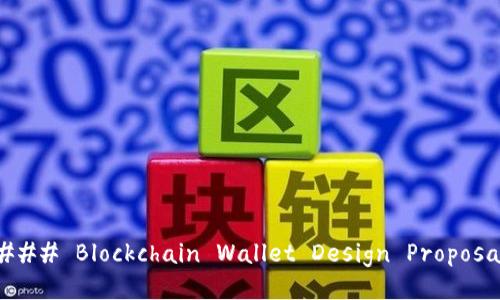### 内容主体大纲1. 引言 - 什么是虚拟币钱包 - 钱包的类型 - 为什么需要搭建自己的虚拟币钱包2. 虚拟币钱包的基础知...
A blockchain wallet is a software application that allows users to store and manage their cryptocurrencies. Unlike traditional wallets that hold physical cash or credit cards, a blockchain wallet stores digital keys needed to access cryptocurrency on the blockchain. These keys are necessary to send or receive cryptocurrencies. The working mechanism of a blockchain wallet revolves around two key components: the public key and the private key. The public key is akin to an email address, which others can use to send you cryptocurrencies. The private key, however, is comparable to your password. Keeping it secure is vital, as anyone with access to it can control your funds. Blockchain wallets interact with the blockchain to let users see their balances, make transactions, and check the status of their activities. Each transaction recorded on the blockchain is public and can be viewed by anyone. However, users remain anonymous, as they only interact using their public keys. Furthermore, blockchain wallets can be either custodial or non-custodial. Custodial wallets, where a third party manages your keys, offer convenience but come with trust issues. Non-custodial wallets give the user full control over their keys and, therefore, their funds, enhancing security but requiring more responsibility. Overall, blockchain wallets play a fundamental role in the usability and accessibility of cryptocurrencies, making it essential for their design to be intuitive and secure in both personal and business contexts.
####
Blockchain wallets are classified into several categories based on how they operate and where they store the user's keys. Each type has its unique advantages and disadvantages, making it essential to choose one that fits your specific needs. **Hot Wallets** are connected to the internet and are easy to access. They are ideal for day-to-day transactions but are more susceptible to hacks due to their online presence. Examples include web wallets and mobile wallets. **Cold Wallets**, on the other hand, are not connected to the internet, making them significantly safer from hacking. They are suitable for storing large amounts of cryptocurrency for extended periods. Hardware wallets, which store keys on a physical device, and paper wallets, which are printed copies of your keys, exemplify cold wallets. **Hardware Wallets** combine the portability of hot wallets with the security of cold wallets. They provide a secure environment to store the private keys offline. **Software Wallets** are applications that can be used on desktop or mobile devices, providing users with a convenient way to manage their cryptocurrencies. They can be further divided into desktop and mobile wallets. **Web Wallets** are accessible through web browsers, allowing users to transact from any device. Though easy to use, they may sacrifice some security. Choosing the right type of wallet is guided by how you plan to use your cryptocurrency. Regular traders might prefer hot wallets, while long-term holders may benefit from cold wallets.
####When designing a blockchain wallet, key features must be integrated to ensure user satisfaction and security. Here are some of the most crucial attributes: **Security** is arguably the most critical feature. The wallet must employ robust encryption methods to safeguard users’ keys and personal information. This could involve biometric authentication and industry-standard protocols. A **User-Friendly Interface** is vital for engagement. A clean, intuitive design can significantly enhance the user experience. Users should be able to navigate through the wallet effortlessly, check balances, and initiate transactions with minimal clicks. **Multi-Currency Support** is increasingly important as the cryptocurrency landscape diversifies. A wallet that supports various currencies allows users to manage multiple assets in one place rather than having multiple wallets. **Backup and Recovery Options** are essential for protecting users from loss. The wallet should provide a secure way for users to back up their keys and a quick recovery process should they need to restore their wallet. Lastly, **Transaction Speed and Fees** can greatly influence the user’s decision. Efficient wallet designs should aim for faster transaction capabilities without incurring excessive fees, potentially integrating layer-two solutions for improved performance. In summary, a blockchain wallet should prioritize user security, an intuitive interface, multi-currency support, and efficient transaction processing.
####
Effective design is vital for creating an appealing and functional blockchain wallet. Key considerations include: **User Experience (UX) Design**: A wallet should provide a seamless user experience. This ranges from the initial onboarding process, where users create accounts, to daily transactions. The design should reduce complexity and enhance user engagement. **Visual Design**: The aesthetic of the wallet plays a significant role in user perception. A modern, clean design with intuitive navigation enhances usability. Utilize recognizable elements that guide users through complex processes. **Accessibility Features**: Wallet design must cater to all users, including those with disabilities. Implement features such as voice commands, screen readers, and adjustable text sizes to broaden accessibility. **Mobile Compatibility**: With the rise of mobile transactions, wallets must perform flawlessly on mobile devices. Designs should be responsive, adapting to different screen sizes while maintaining usability. **Integration with Other Services**: Modern wallet design shouldn't work in isolation. Wallets need to provide integration options with decentralized finance (DeFi) platforms or exchanges. This allows users to trade, stake, or lend their assets without leaving the wallet. In conclusion, comprehensive wallet design should prioritize user experience, aesthetics, accessibility, and compatibility while leveraging integrations with other essential services in the cryptocurrency venue.
####Security remains a top concern in blockchain wallet design. Here are some essential security measures: **Private Key Management**: Users must retain control of their private keys at all times. Wallets should not have access to these keys; instead, they should implement secure ways for users to generate, store, and manage them. **Two-Factor Authentication (2FA)**: This adds an extra layer of security. Users must provide two forms of identification before accessing their wallets. This could include a combination of something they possess (like a mobile device) and something they know (like a password). **Multi-Signature Wallets**: Multi-signature technology requires multiple keys to authorize a transaction. This feature is excellent for businesses or shared wallets, providing enhanced security against unauthorized access. **Regular Security Audits**: Security should not be a one-time consideration. Regular audits help identify vulnerabilities and ensure the wallet remains secure against emerging threats. **Phishing Protection**: Users should be protected against phishing attempts, with features that detect and warn users of suspicious activity or attempts to access their wallets through fraudulent sites. To effectively secure a wallet, these measures should be interlinked, providing a multi-layered security that protects users while enhancing their confidence in cryptocurrency management.
####As cryptocurrencies gain prominence, regulatory standards become increasingly critical. Ensuring compliance involves several layers, including: **Understanding Local Regulations**: Each jurisdiction has specific requirements regarding cryptocurrency operation. Wallet providers must familiarize themselves with these laws to ensure adherence and to avoid legal ramifications. **KYC/AML Compliance**: Implementing Know Your Customer (KYC) and Anti-Money Laundering (AML) processes is essential for compliance. Users may be required to submit identification documents, which can aid in preventing fraudulent activities. **Data Protection Policies**: Regulations such as GDPR in Europe mandate protecting user data. Wallets should adhere to data protection laws, ensuring that personal information is securely stored and processed. **Audit Trails**: Maintain comprehensive records of transactions, which could be necessary for regulatory compliance. This transparency can enhance trust with authorities and customers alike. **Education for Users**: Keeping users informed about regulatory requirements and ensuring they understand their responsibilities can also help protect both parties from regulatory issues. Regulatory compliance can be complex, but by integrating these elements into wallet design and operation, providers can navigate the legal landscape safely and successfully.
####Blockchain technology is ever-evolving, and so are the wallets that support it. Several key trends are emerging in blockchain wallets: **Decentralized Wallets**: Users are increasingly seeking control over their digital assets, leading to the rise of decentralized wallets. These provide enhanced security and privacy, allowing users to manage their funds without a central intermediary. **Integrations with DeFi and NFTs**: The growing popularity of decentralized finance (DeFi) and non-fungible tokens (NFTs) is driving wallet design. Future wallets will likely integrate features that support trading, lending, and interacting with NFTs directly within the wallet. **Enhanced Security Protocols**: As hackers develop more sophisticated methods, wallet security measures will continually adapt. Future wallets may employ advanced techniques, such as biometric identification and artificial intelligence, to further enhance security. **User Education and Adoption**: As blockchain becomes more mainstream, educating users on utilizing wallets effectively will become paramount. Wallet developers may incorporate guided tutorials and educational resources directly within the app. **Atomic Swaps and Cross-Chain Transactions**: Future wallets may support atomic swaps that allow users to swap cryptocurrencies across different blockchains without intermediaries, enhancing flexibility and ease of use. In summary, as user needs and technology evolve, blockchain wallets will need to adapt, incorporating new technologies, improving security, and enhancing user experience to remain relevant in the marketplace.
--- Feel free to elaborate on any section further or adjust the outline based on specific interests or elements you wish to expand upon!